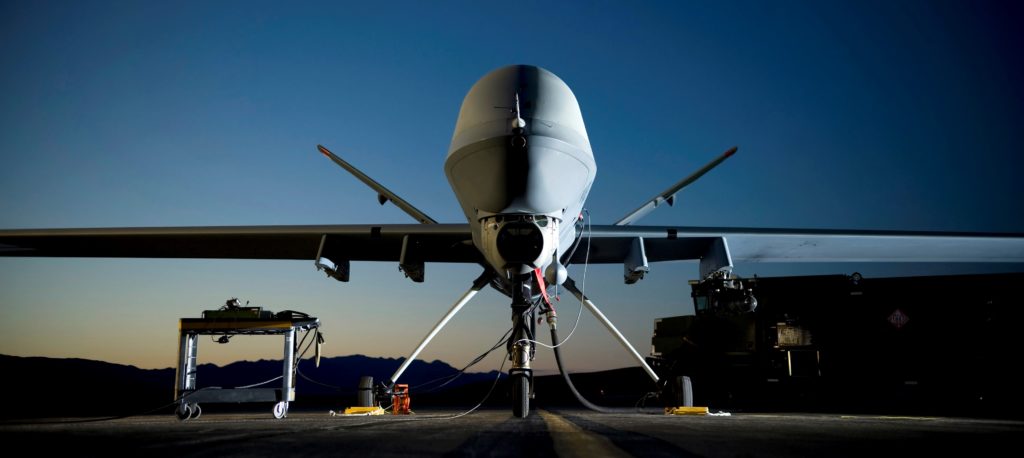Today, the U.S. Department of Defense (DoD) is taking significant steps to modernize existing systems, opening the door for the use of emerging technologies to increase speed and agility. Accelerating adoption of cloud technologies is critical to the DoD’s ability to maintain the long-term strategic advantage of US military forces. However, the DoD still has extensive mission-critical assets in on-premises datacenters, commercial cloud service offerings, and contractor-owned facilities spanning multiple classification levels. A hybrid approach, where on-premises and cloud resources function together, will enable the DoD to make the most of existing assets while benefitting from cloud innovation. A hybrid approach has long-term advantages, as it enables integration between cloud systems and areas that may lack reliable connectivity.
Maintaining a tactical edge via intelligent systems
The ability to collect, store, and analyze data immediately leads to faster response times and greater mission success. Internet of Things (IoT) innovations enable automated intel collection from ground, maritime, and air sensors. In addition, IoT enables analysis that can be used to build insights in command and control situations. Data can be immediately analyzed for informed decision-making and collated centrally to increase operational intelligence for all forces.
But, here’s a gap between the collection of data and its analysis. Frequently, local forces—whether in the midst of a desert or fathoms deep in a submarine—don’t have fast, reliable connections back to centralized systems. This can stall data collection and analysis until systems reconnect. Bringing the cloud to the field is critical to ensuring that data can be readily analyzed and acted upon without delay.
To meet the needs of modern warfare, solutions must be hybrid by design, enabling the power of the cloud even in offline situations. Personnel need to be able to rely on these systems for intelligence gathering and tactical analysis, no matter where they are.
Azure—hybrid by design
Microsoft Azure has always been hybrid by design. This design is based on decades of experience with enterprise customer requirements and challenges. A hybrid cloud helps organizations address requirements around regulations, connectivity, and latency. That’s why many government agencies turn to a hybrid approach as the foundation of their IT modernization strategies. Hybrid cloud enables seamless movement between dedicated cloud environments and agency-owned infrastructures.
With Azure Stack, an extension of Azure, government customers can take advantage of these powerful hybrid capabilities to bring core and advanced cloud services to the edge, whether that means a field office, a tank, or an aircraft. Azure Stack delivers a purpose-built system—from trusted and compliant hardware vendors—extending the centralized resources of Azure to a local deployment. Azure Government with Azure Stack provides the only truly consistent hybrid cloud platform on the market that can support IoT and analytics—from the cloud to the tactical edge, and everywhere in between.
With Azure Stack, it’s possible to process data in the field, without worrying about latency or internet connectivity, and then run aggregated analytics in Azure Government to get the most precise predictions and anomaly detections. Azure Stack enables intelligence gathering and analysis at the edge for scenarios like forward-deployed tactical units and platforms (for example, floating transport vehicles) by means of satellite or other transient communication methods.
Enabling consistency and intelligence analysis anywhere
Data is critical to intelligence, and IoT devices are increasingly being used to supply that data. These applications can analyze data rapidly and return actionable intelligence to mission owners. While the applications clearly provide value, if the data can’t be consumed consistently, or if a deployed combat unit can’t access the systems, some of that value is lost. Making the Azure Government cloud portable and local to tactical units ensures they have the same experience whether they’re connected or not.
The hybrid approach of Azure ensures consistent data collection, no matter where a unit is. Azure accomplishes this without the use of additional tools or processes that could endanger sensitive information. Applications that use AI services can be hosted both centrally and locally, which enables units to collate, analyze, and act on immediate intelligence collected from combat situations and share that intelligence back centrally when reliable connections are available.
Azure Stack can also help ensure that sensitive data remains secure. This is critical when government entities like military bases in foreign countries can’t use local cloud services for data or applications because of data sovereignty laws. A hybrid cloud extends from the center to the tactical edge, which can be connected or disconnected.
Getting started with Azure Government
Azure Government provides integrated AI, machine learning, and cognitive services through dedicated DoD regions. Azure Government has been awarded Impact Level 5 Provisional Authorization, and Azure Stack has been assessed for FedRAMP Moderate. Combining Azure Government with Azure Stack brings the cloud to the tactical edge.
Learn more about Azure Government and Azure Stack. To explore Azure Government, request your free 90-day trial today.
We welcome your comments and suggestions to help us improve your Azure Government experience. To stay up to date on all things Azure Government, be sure to subscribe to our RSS feed and to receive emails by clicking “Subscribe by Email!” on the Azure Government Blog.



0 comments